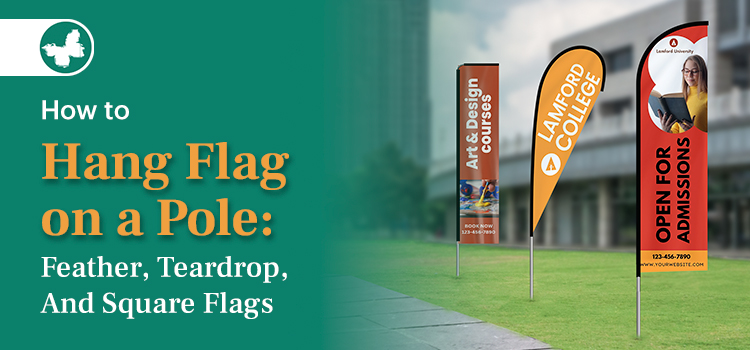Watching your flag fly gently in the breeze over your place of business is a beautiful sight. Flags are a great way to advertise events, direct foot traffic, and advertise your business. They are eye-catching and multipurpose tools to be used on every occasion, whether a commercial flag on the building entrance or outside your booth for better visibility of your brand at trade shows.
There are a few easy steps you should take after designing your flag to ensure that it will stay secure and stand strong. This blog post provides all the necessary equipment and instructions to hang flag on a pole for a successful presentation. This will help you see how crucial installing steady flags is to your marketing plans.
Contents
Importance of Flags in Branding
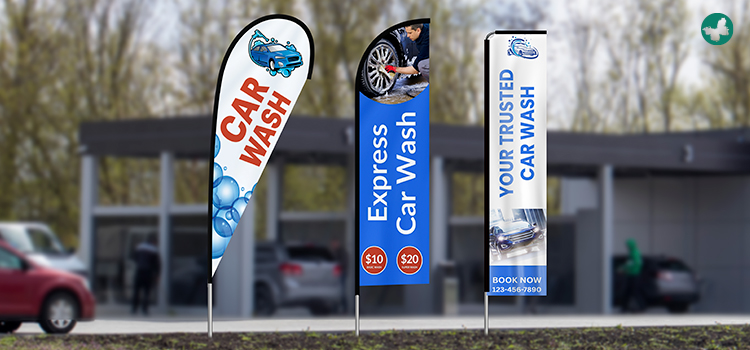
Because they increase visibility and draw customers’ attention, flags are useful for branding. They promote a brand’s message and act as marketing tools, particularly at outdoor events. Feather flags and other custom flags give the brand height and movement, increasing its exposure. This method of brand promotion could be perfect if installed correctly and placed strategically. Let’s break down the details of proper installation for three different types of flags.
Tools and Accessories to Hang Flag on a Pole
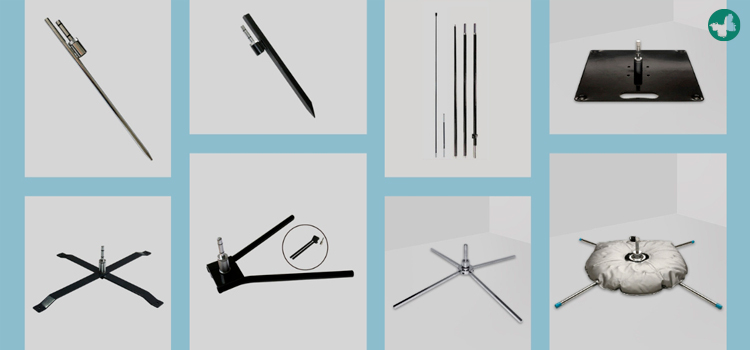
The accessories and hardware required to hang flag on a pole will vary based on the type of flag and flagpole. If you are thinking about getting a flagpole or have already done so, you might want to learn how to install one. You will learn how to follow each step for the various flag types here. You may find this flagpole installation guide useful.
Flagpole or Ground Spike
While a ground spike is a kind of anchor used to fasten a flagpole or other posts into the ground, the flagpole hardware is a tall pole intended to display a flag. Flagpoles come in a variety of heights and designs and can be constructed from materials like fibreglass, aluminium, or wood. There are three different ways to install flagpoles: with a base, on a wall, or in the ground.
The purpose of ground spikes is to secure posts, such as flagpoles, into the ground without the use of concrete or excavation. This accessory is typically constructed of strong metal. A plate or sleeve is used to secure the post, and the pointed end of a ground spike is used to drive it into the ground.
Mounting Clips, Ropes, and Bases
Strong, weatherproof ropes composed of nylon or Dacron are required to raise the flag. The flag is attached to the rope using clips or snap hooks, which frequently have grommets on them. You will also require a base or sleeve to secure your in-ground flagpole to the ground.
Depending on the size of your flag, its intended location, and its level of stability, pick a proper base. You can choose from a cross base, a metal plate base, and an underwheel folding base. Instead of letting the flag slide down, you can also consider the rope and stopper rings with cleats.
Step-by-Step Setup Guide for Each Flag Type
All three types of flags usually require the same general procedures for installation, which are as follows:
- Choosing and preparing the site
- Assembly of flagpoles
- Setting up
- Attaching the flag
Nonetheless, we will go over every detail you should take into account when setting up each kind of flag.
Feather Flag Setup Instructions
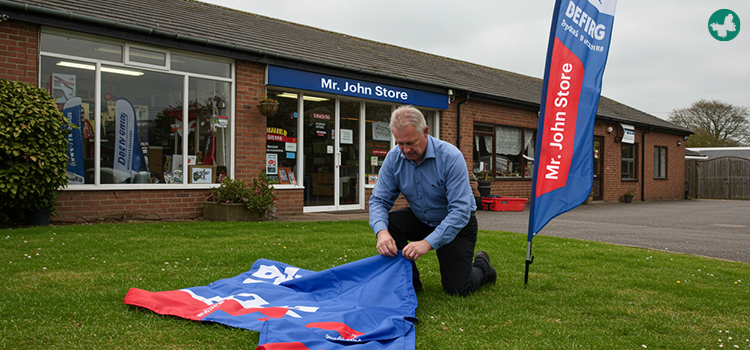
Finding the various pole sections is the first step. Usually, this involves joining the poles together, starting with the thickest, and then sliding the thinner sections into the thicker ones. A rigid structure should be formed by the poles being firmly connected.
Then, seek out the flag’s pole pocket to secure it. Once the poles are assembled, slide them into the flag pocket until the flag is completely mounted. For easy storage and transportation, the majority of feather flags include a carry case.
Placing the assembled flag and pole onto the ground spike requires hammering the spike into the ground, leaving the top visible. If you’re using a cross base, place it on a level surface after unfolding the legs. Certain flags may be fastened to the pole with a cord or clip.
Teardrop Flag Setup Instructions
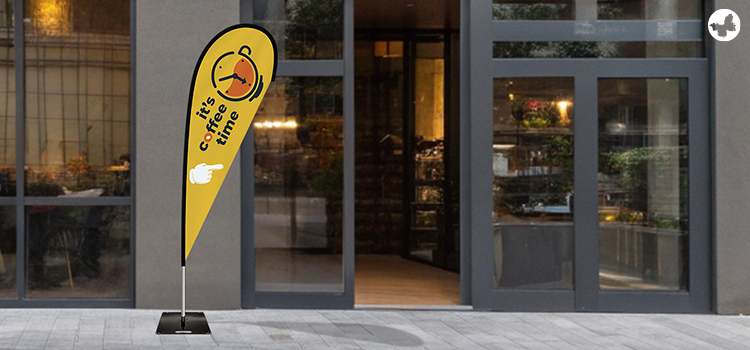
You can install a teardrop flag in just one minute, and it’s very simple. Start by making sure you have all the required parts. One by one, join the flagpole sections to complete the assembly. To keep the pole from falling apart while in use, make sure every component fits tightly. The procedure is simple. Pass the pole through the printed teardrop flag’s sleeve.
Next, pick the base that is suitable for your location. Use a ground spike on soft surfaces, such as sand or grass, and drive it deeply into the ground. For extra stability on hard surfaces like concrete, use a steel plate base or cross base. Make sure the pole is securely fastened to the base by attaching it.
Finally, pull the flag with one hand, hold it at the bottom, and hook the string to the pole base clip to tighten it. Securely tighten the string to maintain the flag’s rigidity.
Square Flag Setup Instructions
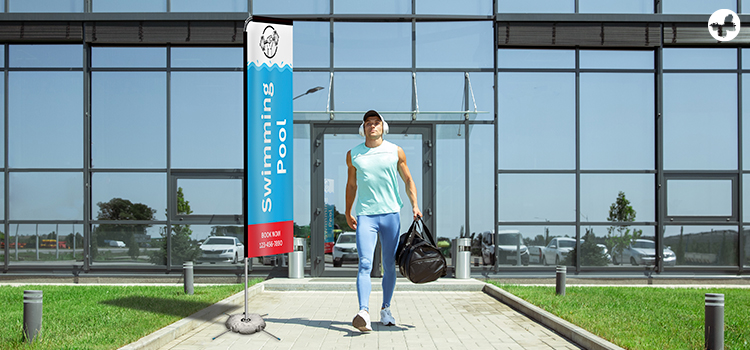
Square flags are easy to assemble, lightweight, portable, weatherproof, and long-lasting. To begin putting these flags together, thread the rope through the flag’s grommets, starting at the top and working your way down. Afterward, secure the rope to the flag with a knot such as a bowline or clove hitch.
The telescopic pole should be extended to the appropriate height. The adjustable sections of telescopic poles enable them to be extended or retracted to varying heights, making them appropriate for a range of flag sizes.
Attach the ball bungees to the grommets on the pole to secure the flag. To secure the flag to the bracket, use clips or other fasteners. Make sure the flag is taut and secure by adjusting the tension. With caution, raise the flag.
Outdoor vs. Indoor Flag Installation
Businesses can use both for optimal marketing impact by knowing how indoor and outdoor flag installations differ from one another. The key differences in the application of flags include:
- While indoor flags can be made of more delicate materials, outdoor flags need to be made of sturdy materials and construction to withstand the weather, especially in Canada.
- Indoor flags can be used to draw attention to particular items, make an area more interesting, and reaffirm brand messaging. However, when strategically positioned to draw attention to sales or promotions, outdoor flags can dramatically increase foot traffic.
- Indoor flags are made for closer exposure, whereas outdoor flags are made for maximum visibility from a distance.
- Indoor flags are more concerned with directing customers, giving information, and improving the brand experience within a space, whereas outdoor flags are mainly used to draw attention and raise brand awareness.
Conclusion
Because of their visual impact, capacity to raise brand awareness, and capacity to evoke strong feelings in customers, flags are effective marketing tools. At events, storefronts, and trade shows, they are especially successful at attracting attention and increasing visibility in outdoor environments. It is important to install your flags properly to make them last longer and install them strategically. ButterflyGP offers different types of flags and all of their accessories you need to perform a perfect marketing campaign.
